|
|

|
Day 2, Tuesday 21 May
Adjusting…….. The benefits of travel are immense but you must be prepared to adapt and quickly to enjoy the advantages. Yesterday, never was that more necessary: A new country, culture, language, currency, food, transport and many more aspects without much international influence to mitigate their effects, were all thrown into the mix necessitating a very steep learning curve indeed. In some cases, adaptation to change seemed impossible.
Overnight the first hurdles were overcome as we settled in to Crystal Palace Hotel. So comfortable was it that it was almost a shame to leave it to go sightseeing. That mood was reinforced at breakfast time. Adjusting to the type of breakfast offered here isn’t going to be a challenge. The full buffet breakfast includes a range of international options from Western, Chinese, Japanese and local. I wouldn’t complain if it were a lunch or dinner. No amount of prior advertisement has prepared us for it: Just amazing. However we must make a start and that seems an anti-climax.
Ngar Htat Gyi Pagoda…….. The first site visit is a 15 minute walk away and we decide to go for it but fail to find the entrance causing me to reach in my pocket and order a taxi for a very short taxi journey that really proved unnecessary. Approached by a covered staircase, it’s impossible to see the spire of Ngar Htat Gyi Pagoda as we’re soon at the entrance. Here is an enchanting Burmese style Buddha image enshrined within the chedi which is intriguing since I’m used to seeing separate prayer halls (viharn) and pagoda (chedi). The large image is white with richly decorated golden robes against giant latticed carved hardwood panelling. I just wonder what the pagoda looks like from the outside. Returning back to the road we are informed of another temple just opposite but it’s hardly visible from the road.
Adjusting…….. The benefits of travel are immense but you must be prepared to adapt and quickly to enjoy the advantages. Yesterday, never was that more necessary: A new country, culture, language, currency, food, transport and many more aspects without much international influence to mitigate their effects, were all thrown into the mix necessitating a very steep learning curve indeed. In some cases, adaptation to change seemed impossible.
Overnight the first hurdles were overcome as we settled in to Crystal Palace Hotel. So comfortable was it that it was almost a shame to leave it to go sightseeing. That mood was reinforced at breakfast time. Adjusting to the type of breakfast offered here isn’t going to be a challenge. The full buffet breakfast includes a range of international options from Western, Chinese, Japanese and local. I wouldn’t complain if it were a lunch or dinner. No amount of prior advertisement has prepared us for it: Just amazing. However we must make a start and that seems an anti-climax.
Ngar Htat Gyi Pagoda…….. The first site visit is a 15 minute walk away and we decide to go for it but fail to find the entrance causing me to reach in my pocket and order a taxi for a very short taxi journey that really proved unnecessary. Approached by a covered staircase, it’s impossible to see the spire of Ngar Htat Gyi Pagoda as we’re soon at the entrance. Here is an enchanting Burmese style Buddha image enshrined within the chedi which is intriguing since I’m used to seeing separate prayer halls (viharn) and pagoda (chedi). The large image is white with richly decorated golden robes against giant latticed carved hardwood panelling. I just wonder what the pagoda looks like from the outside. Returning back to the road we are informed of another temple just opposite but it’s hardly visible from the road.
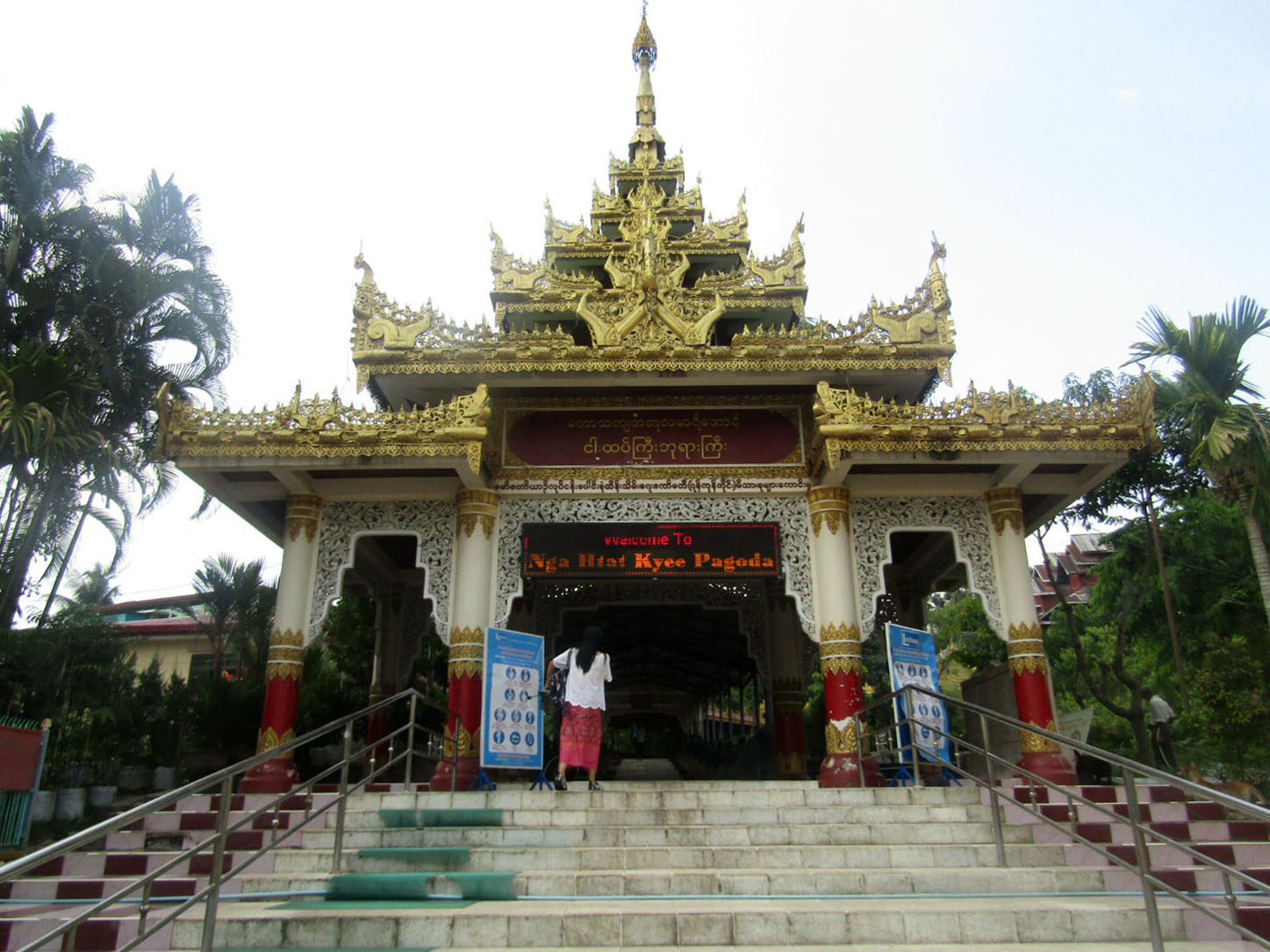
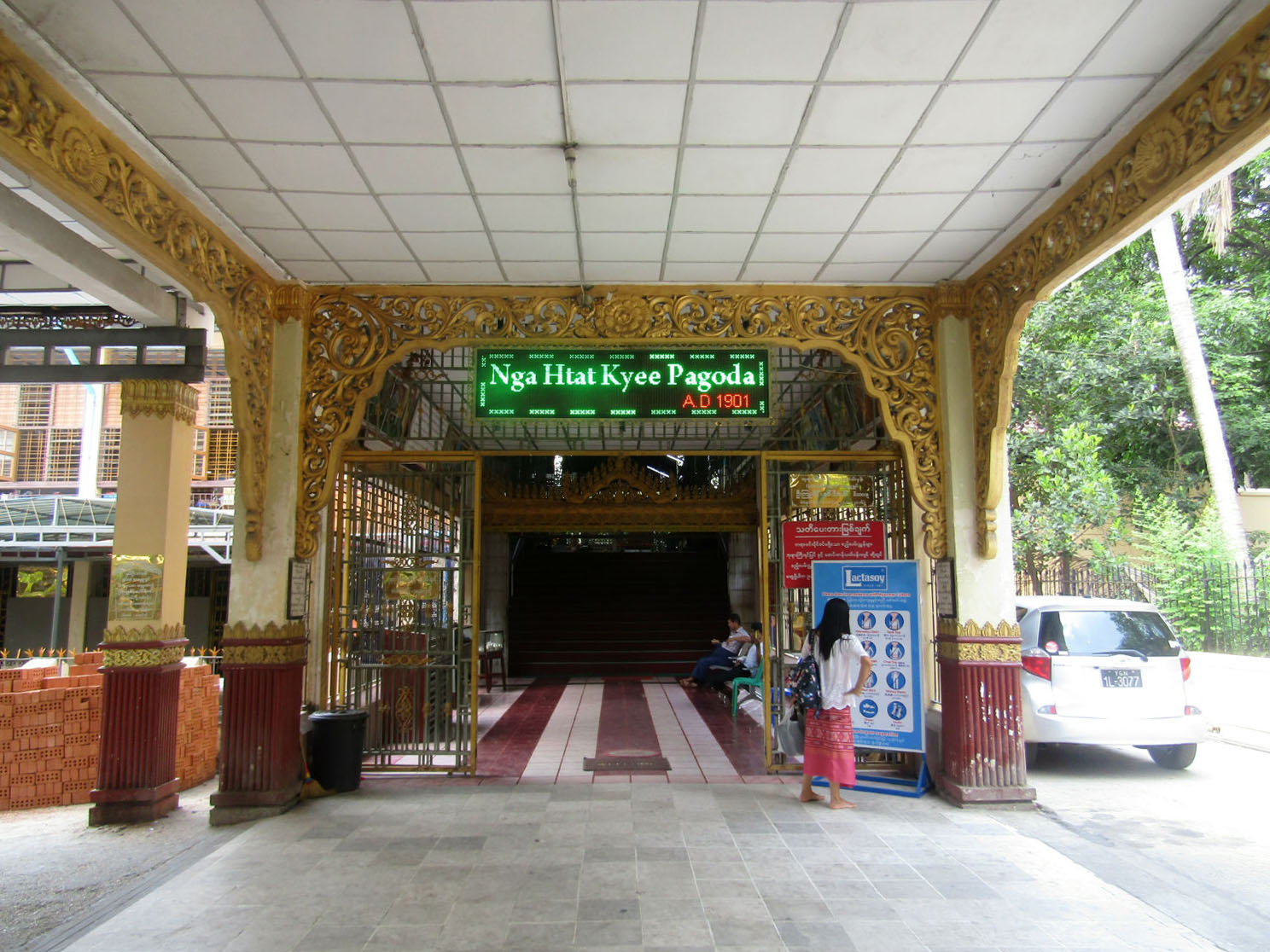
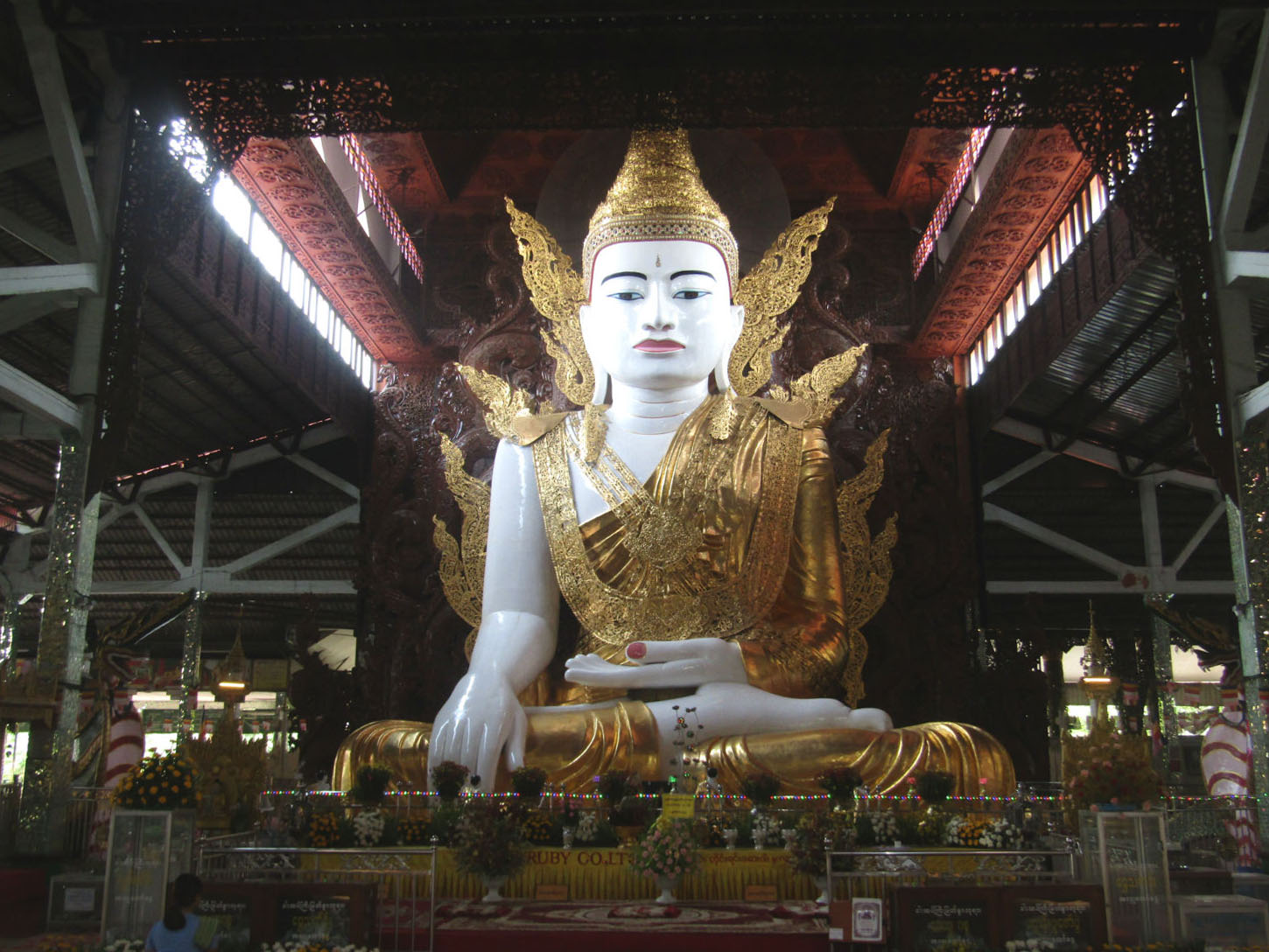
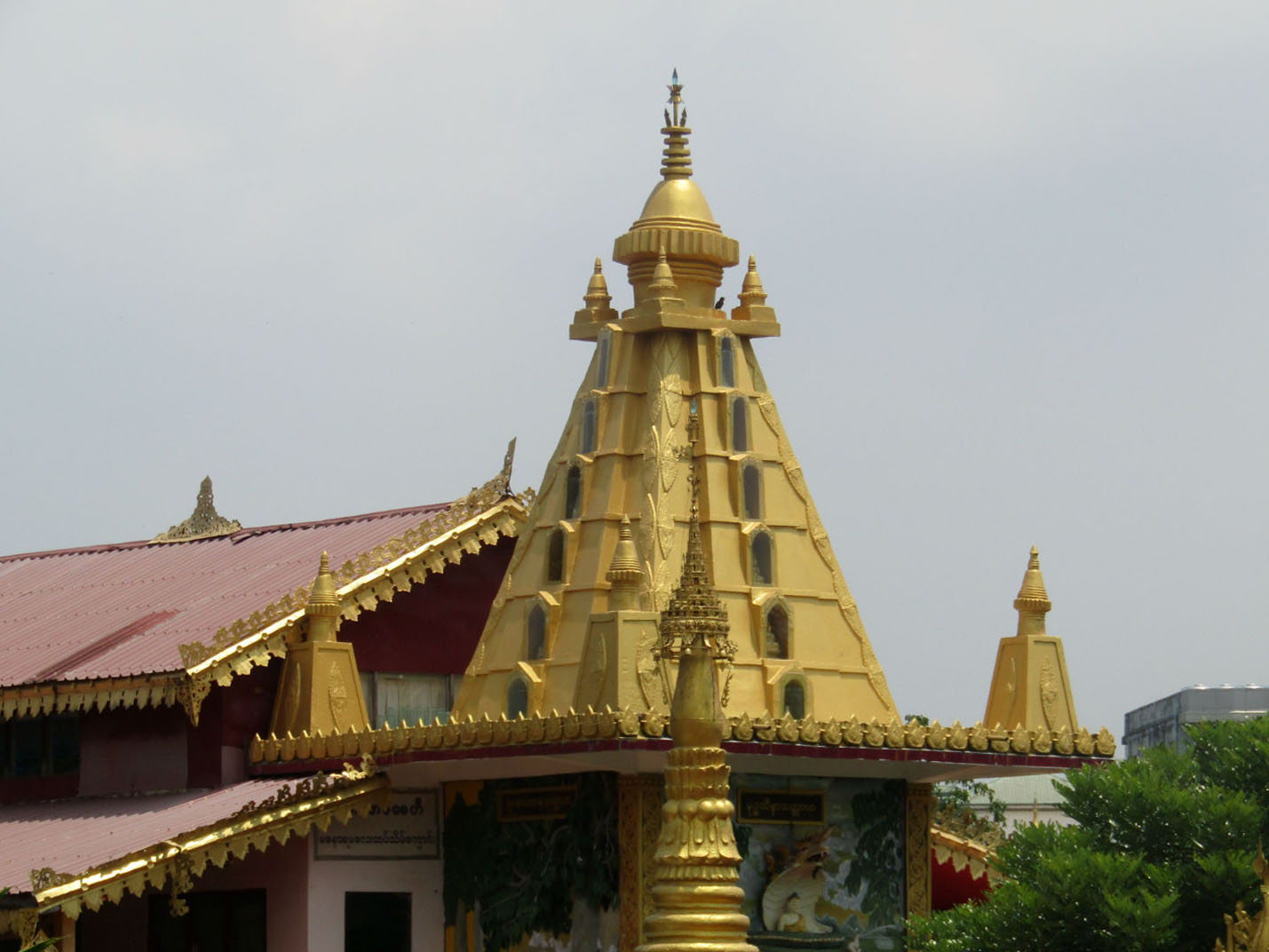
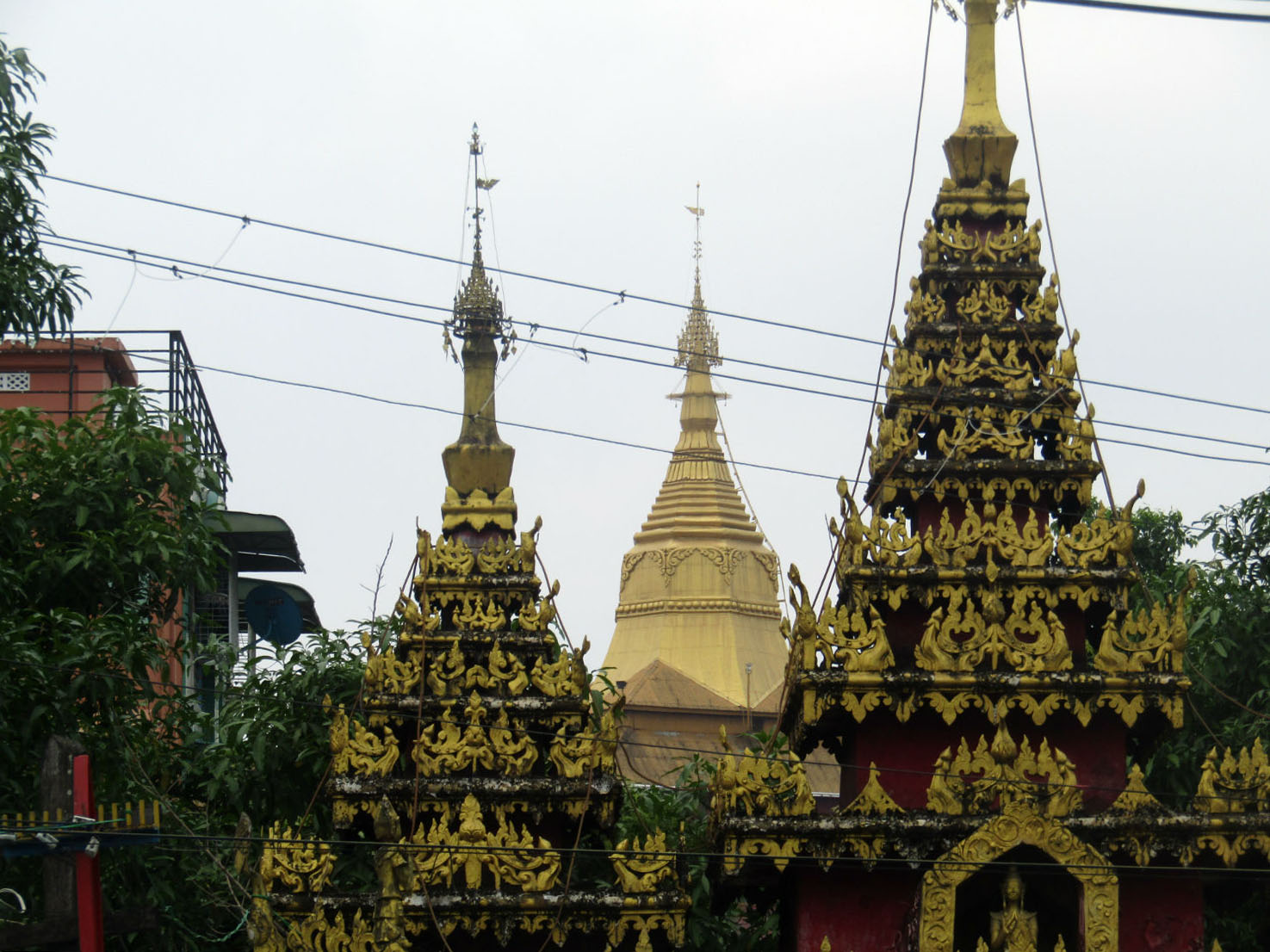
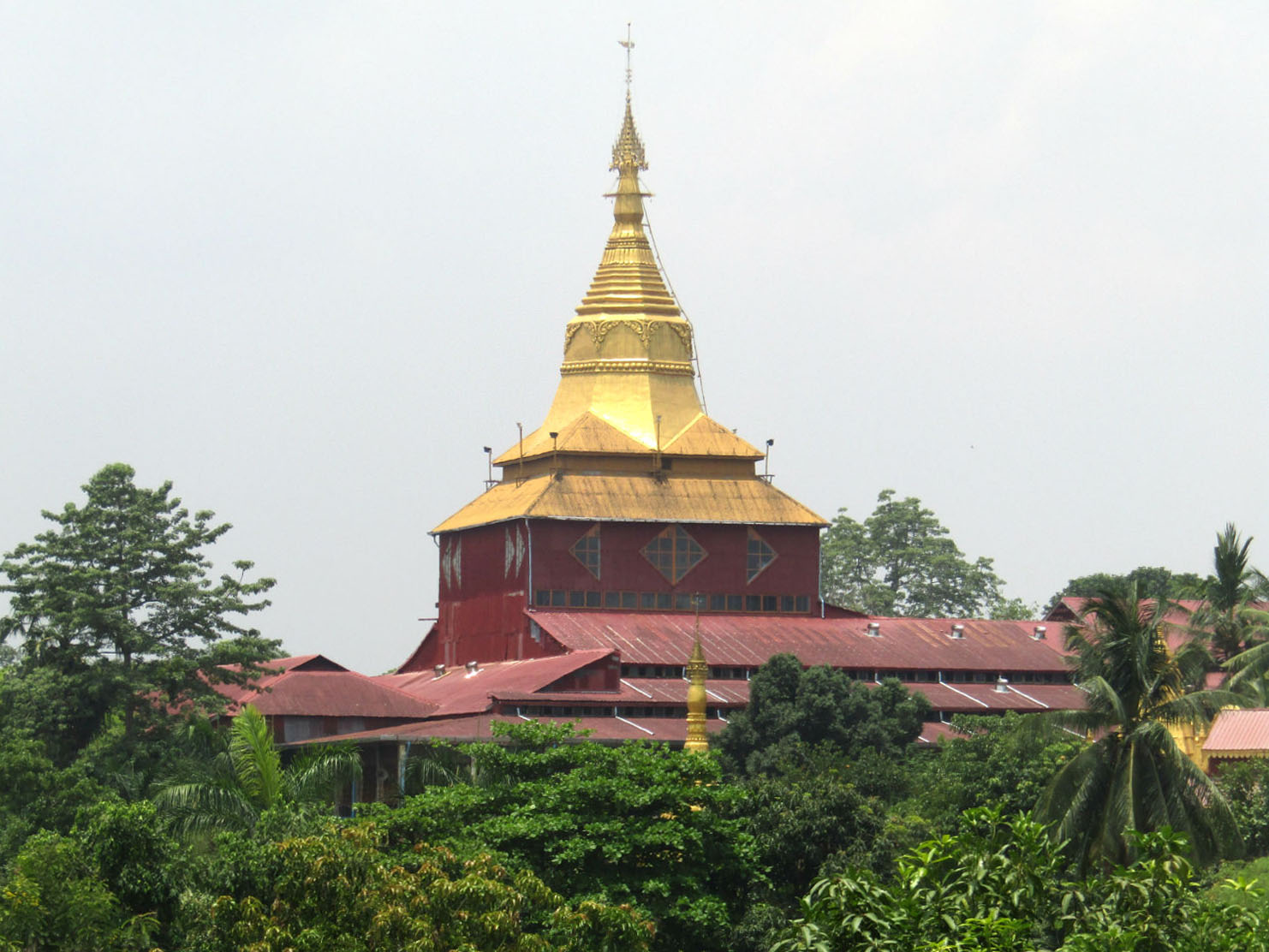 Ngar Htat Gyi Pagoda, Yangon
Ngar Htat Gyi Pagoda, Yangon
Chauk Htat Kyi Pagoda……..
It would seem there is an access road leading to Ngar Htat Gyi Pagoda but on foot as the temple is located on a hill we instinctively look for pedestrian access and we don’t have to look very hard. A man appears directing us in the direction of the complex but curiously we’re told to leave our shoes outside a rather dilapidated building that appears to be the home of a resident monk, before ascending the staircase to the complex. Katoon is suspicious and wonders why we don’t carry our shoes in a plastic bag which is recommended elsewhere. However the man is persistent and there shouldn’t be cause for concern. We head on up to the complex without our shoes.
In the compound at Chauk Htat Kyi Pagoda there is the one of the largest reclining Buddha images I’ve ever seen. However, the complexion on the face of this image leaves me quite confused. The style is Burmese but it could easily feature on the front cover of Vogue. I thought the Lord Buddha was a man. I doubt if he applied eye shadow, eyelash black and wore lipstick.
In the compound at Chauk Htat Kyi Pagoda there is the one of the largest reclining Buddha images I’ve ever seen. However, the complexion on the face of this image leaves me quite confused. The style is Burmese but it could easily feature on the front cover of Vogue. I thought the Lord Buddha was a man. I doubt if he applied eye shadow, eyelash black and wore lipstick.

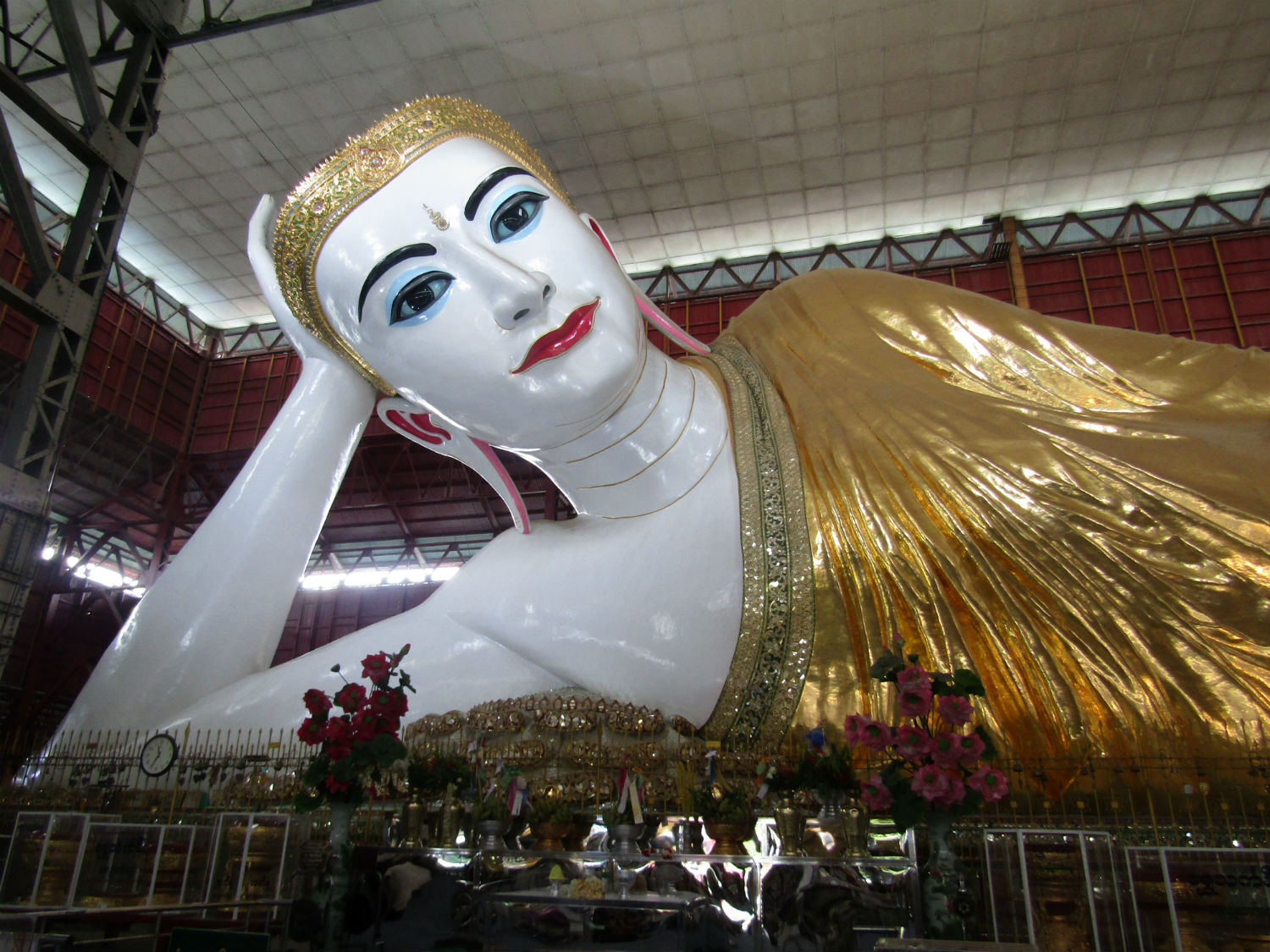
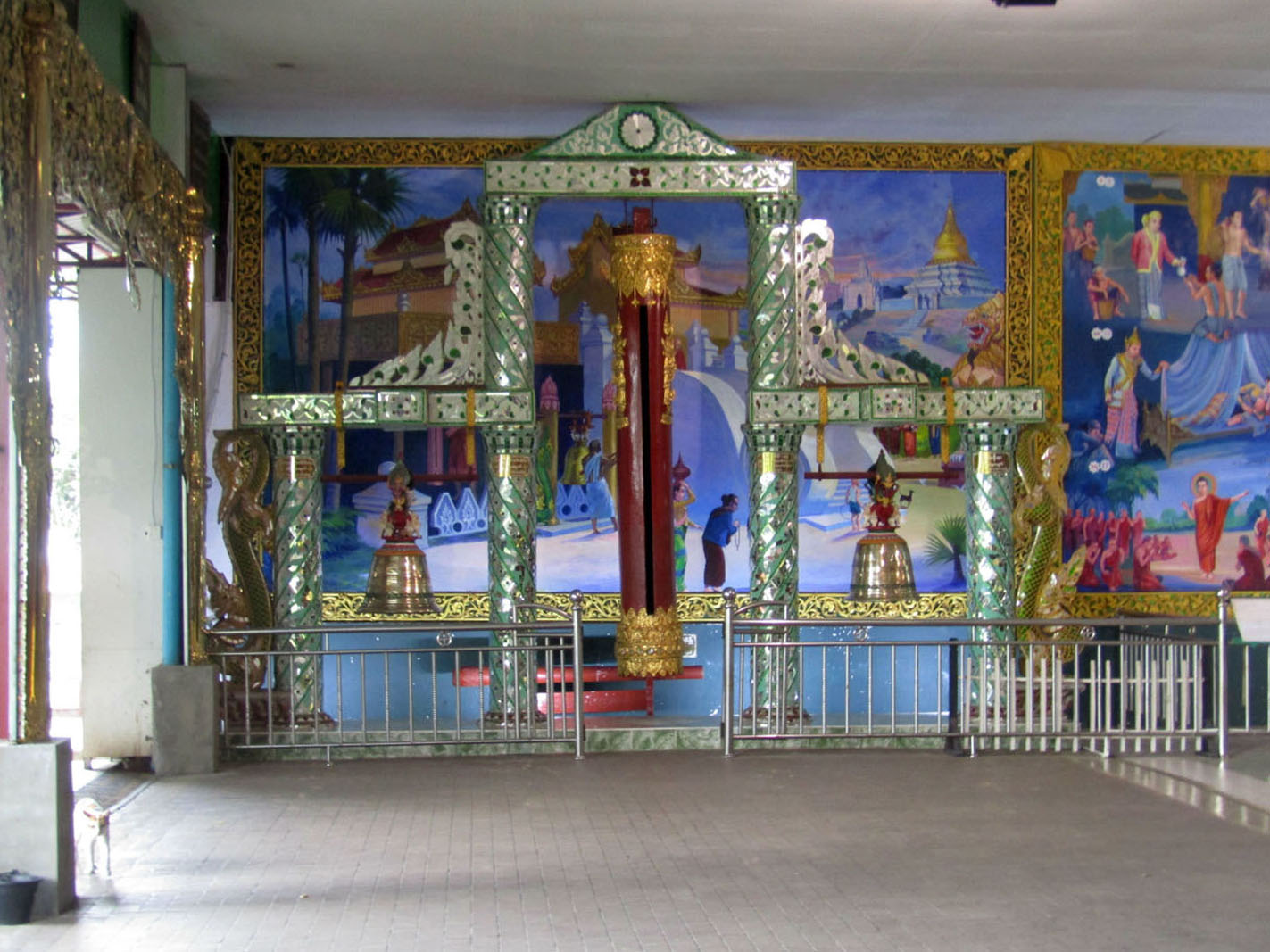 Chauk Htat Kyi Pagoda, Yangon
Chauk Htat Kyi Pagoda, Yangon
The newly constructed image here is in stark contrast to the one existing in colonial times. A photograph of that image appears in the hall showing the image exposed on the skyline with a rather grotesque head bolt upright to the relining body. Also in the hall is a flamed photo gallery of prominent Buddhist sites mostly in Myanmar but some elsewhere. These are stunningly beautiful in some of the more exotic sites in natural locations in the remoter parts of the country but has me asking an interesting question considering I’ve put so much effort into recording Thailand’s historic temples. Historically, I’m aware that Buddhism arrived her from Sri Lanka and took hold here far earlier than it did in Thailand. It therefore means that as far as the roots of Buddhism are concerned, then I’ve been looking in the wrong place. However, in Thailand, in understanding that country’s history, I need not consider Buddhism as an essential requirement, since religion has been shown to transcend all boundaries. Therefore I can study Thailand in terms of its political and historic rather than its religious.
Extorsion…….. As we head back the way we came, we lose the option to take a taxi from there to our next destination. At the base of the staircase, the man reappears but we could easily have picked up our shoes but Katoon, never one to miss the opportunity to make merit, follows the man into the monk’s home. It’s clear that the intention is to receive the monk’s blessing. By this time, an interpreter who can speak English and Thai appears and we are ushured into a most dismal room where the monk resides, prays, eats and sleeps. We are told he has great powers and we receive a quite elaborate blessing, albeit essentially similar to many we’ve had in Thailand. His blessing will protect us from all ills during our travels. There is no need for an insurance policy.…….. At the end of this process, of course, we expect to pay the insurance premium only to find out that the rate for this provider has dramatically increased. Katoon offers a typical amount in Thai baht but it’s brushed aside as inconsequential but I hold the tour’s principal finances and have to reach for my wallet. The interpreter takes a huge fancy to my bigger notes that I protest I need for my visit. An argument carries on for several minutes and I hand over rather reluctantly 10,000 kyat (about $7) to shut him up. I’m not sure who will benefit from this donation and it will not break the bank but Katoon is shaken and I’m incensed by the demands for money which in all my life and hers has never happened before at a religious site. It remains to be seen if this will affect my thinking concerning Buddhism and religion in general but I do believe this to be a isolated case of malpractice.……..
Sule Pagoda…….. It’s time to head downtown and the principal landmark of Sula Pagoda, a point where many city busses terminate.
The Sule Pagoda is a Burmese stupa located in the heart of downtown Yangon, occupying the centre of the city and an important space in contemporary Burmese politics, ideology and geography. According to legend, it was built before the Shwedagon Pagoda during the time of the Buddha, making it more than 2,600 years old. Burmese legend states that the site for the Shwedagon Pagoda was asked to be revealed from an old national who resided at the place where the Sule Pagoda now stands.
The Sule Pagoda has been the focal point of both Yangon and Burmese politics. It has served as a rallying point in both the 1988 uprisings and 2007 Saffron Revolution.
The pagoda is listed on the Yangon City Heritage List.
Extorsion…….. As we head back the way we came, we lose the option to take a taxi from there to our next destination. At the base of the staircase, the man reappears but we could easily have picked up our shoes but Katoon, never one to miss the opportunity to make merit, follows the man into the monk’s home. It’s clear that the intention is to receive the monk’s blessing. By this time, an interpreter who can speak English and Thai appears and we are ushured into a most dismal room where the monk resides, prays, eats and sleeps. We are told he has great powers and we receive a quite elaborate blessing, albeit essentially similar to many we’ve had in Thailand. His blessing will protect us from all ills during our travels. There is no need for an insurance policy.…….. At the end of this process, of course, we expect to pay the insurance premium only to find out that the rate for this provider has dramatically increased. Katoon offers a typical amount in Thai baht but it’s brushed aside as inconsequential but I hold the tour’s principal finances and have to reach for my wallet. The interpreter takes a huge fancy to my bigger notes that I protest I need for my visit. An argument carries on for several minutes and I hand over rather reluctantly 10,000 kyat (about $7) to shut him up. I’m not sure who will benefit from this donation and it will not break the bank but Katoon is shaken and I’m incensed by the demands for money which in all my life and hers has never happened before at a religious site. It remains to be seen if this will affect my thinking concerning Buddhism and religion in general but I do believe this to be a isolated case of malpractice.……..
Sule Pagoda…….. It’s time to head downtown and the principal landmark of Sula Pagoda, a point where many city busses terminate.
The Sule Pagoda is a Burmese stupa located in the heart of downtown Yangon, occupying the centre of the city and an important space in contemporary Burmese politics, ideology and geography. According to legend, it was built before the Shwedagon Pagoda during the time of the Buddha, making it more than 2,600 years old. Burmese legend states that the site for the Shwedagon Pagoda was asked to be revealed from an old national who resided at the place where the Sule Pagoda now stands.
The Sule Pagoda has been the focal point of both Yangon and Burmese politics. It has served as a rallying point in both the 1988 uprisings and 2007 Saffron Revolution.
The pagoda is listed on the Yangon City Heritage List.
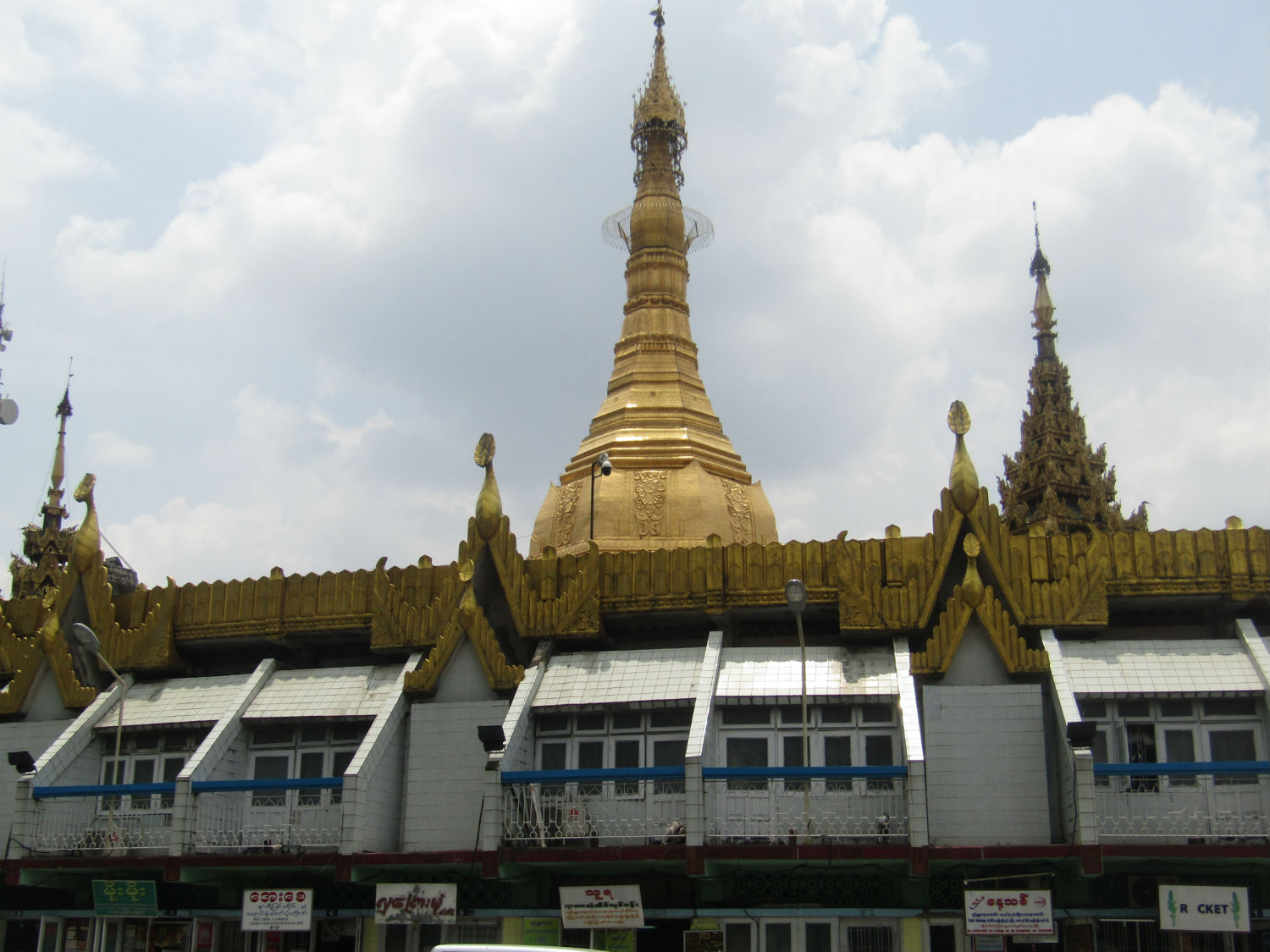

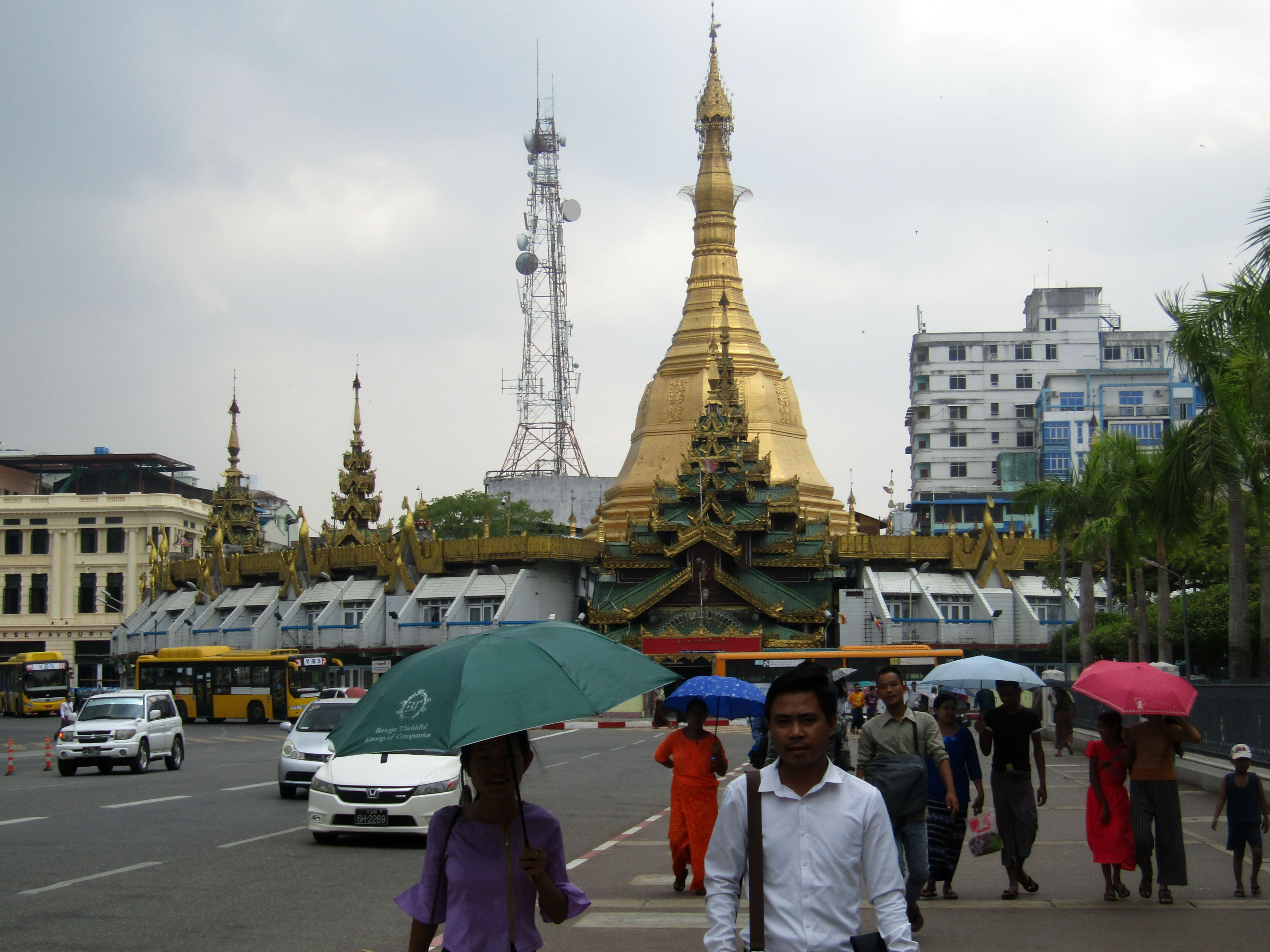 Sule Pagoda, Yangon
Sule Pagoda, Yangon
Around Maha Bandula Park……..
Content to take photographs from the road, I add Sule Pagado to a list of other sights available from this location. Adjacent is the Maha Bandula Park in the centre of which are the Statues of Yali. This used to be the site of a monument to Queen Victoria. Opposite is Yangon City Hall and in the distance is the courthouse. To the east of the park is Immanuel Baptist Church and in the adjoining blocks are examples of British colonial architecture.
The arrival at this location has at least produced a more pleasing aspect than at Bahan with some important historical buildings with shops and restaurants open for business. Katoon however won’t take the bate. At least one piece of business gets done as I add a few more kyat to my treasury; this time changing 1,000 Thai baht.
The arrival at this location has at least produced a more pleasing aspect than at Bahan with some important historical buildings with shops and restaurants open for business. Katoon however won’t take the bate. At least one piece of business gets done as I add a few more kyat to my treasury; this time changing 1,000 Thai baht.
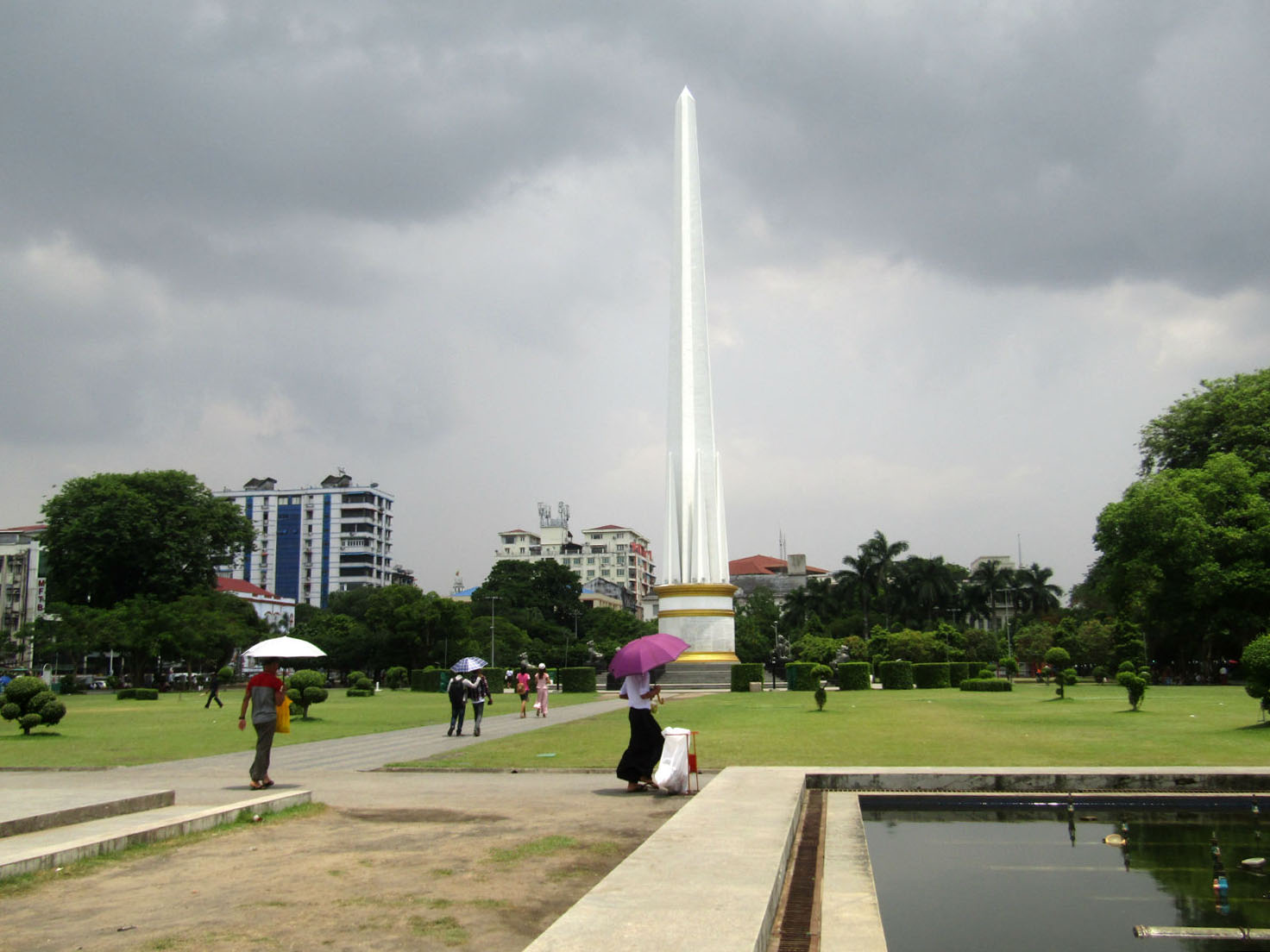
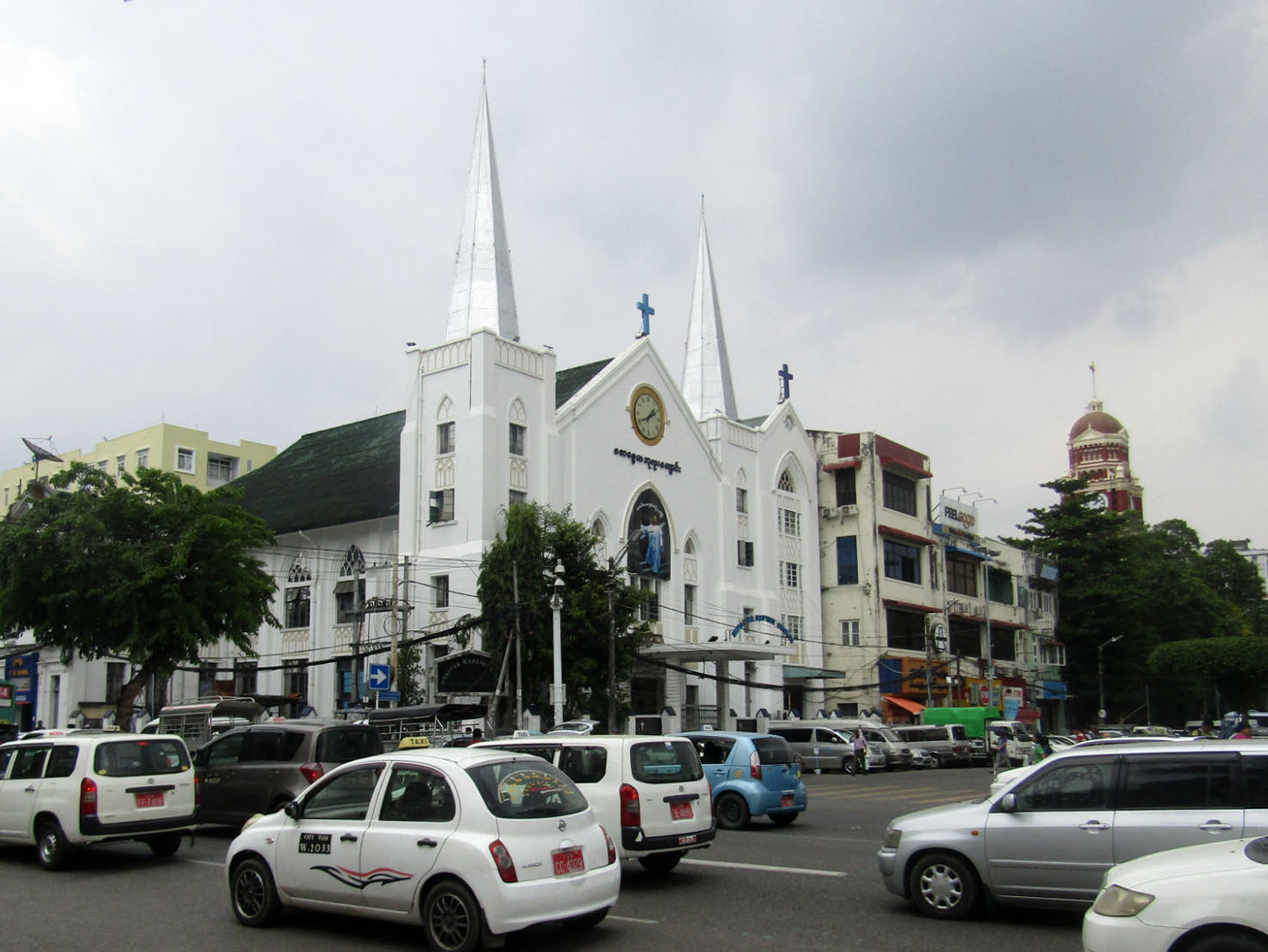
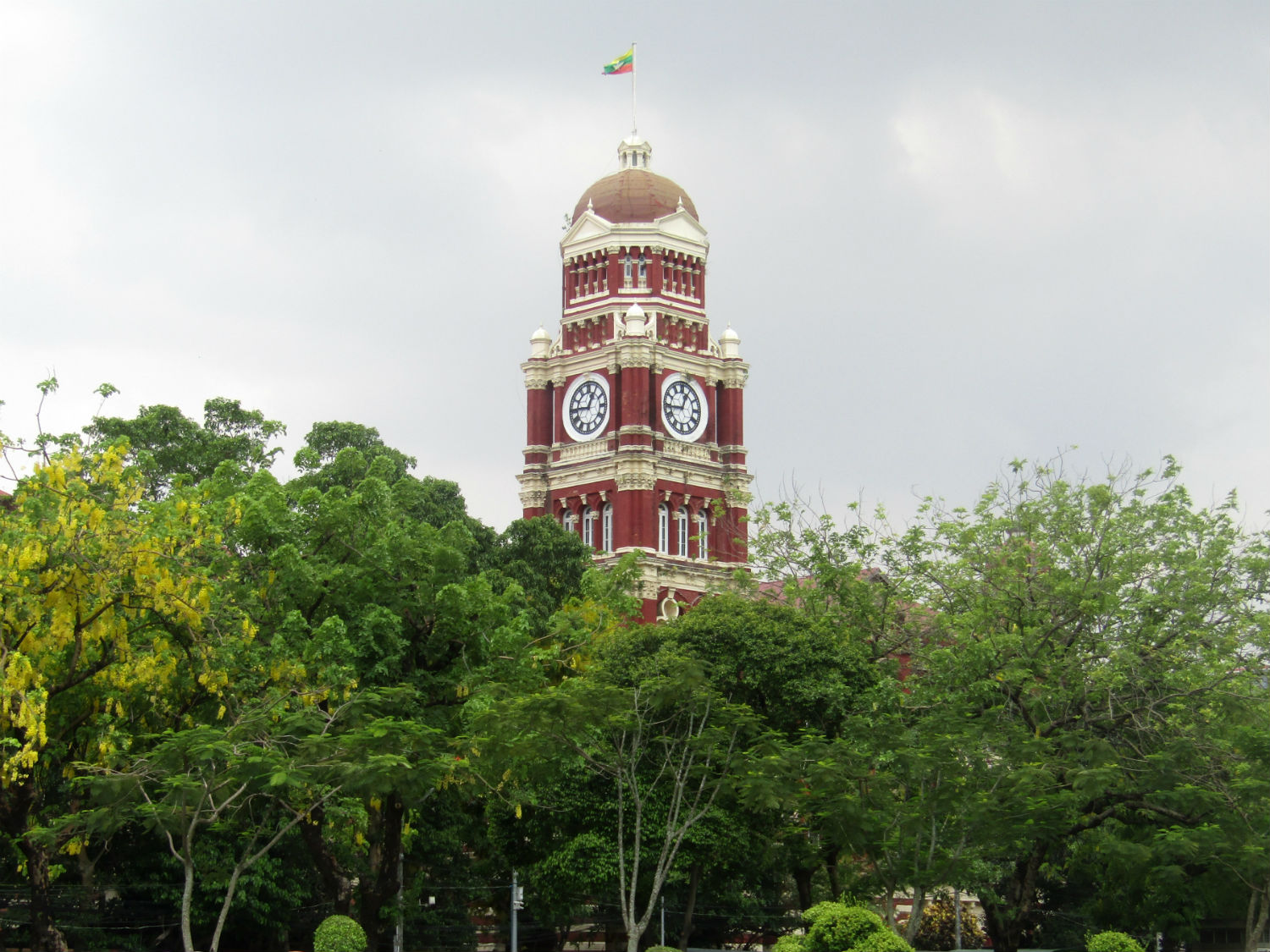 In and around Maha Bandula Park, Yangon
In and around Maha Bandula Park, Yangon
Yangon Railway Station……..
From here with my energy flagging, Katoon heads of through the slum areas north of Sule Pagoda where she’s told the railway station is located. Nobody tells me its a 20 minute walk. At the station the structure is classic Victorian, a huge and once proud building, a status symbol now in decline. Here more so than anywhere so far is evidence that the city, rather than being proud of itself, has been left to decay, even its rulers abandoning it to set up a new capital city away from the filth leaving its people to cope the best it can. It’s quite sad to see.
From the station and its collapsing railway infrastructure, it’s on to one more site in view to get a flavour of what is a complete contradiction to what I have recently experienced from a religious point of view.
From the station and its collapsing railway infrastructure, it’s on to one more site in view to get a flavour of what is a complete contradiction to what I have recently experienced from a religious point of view.
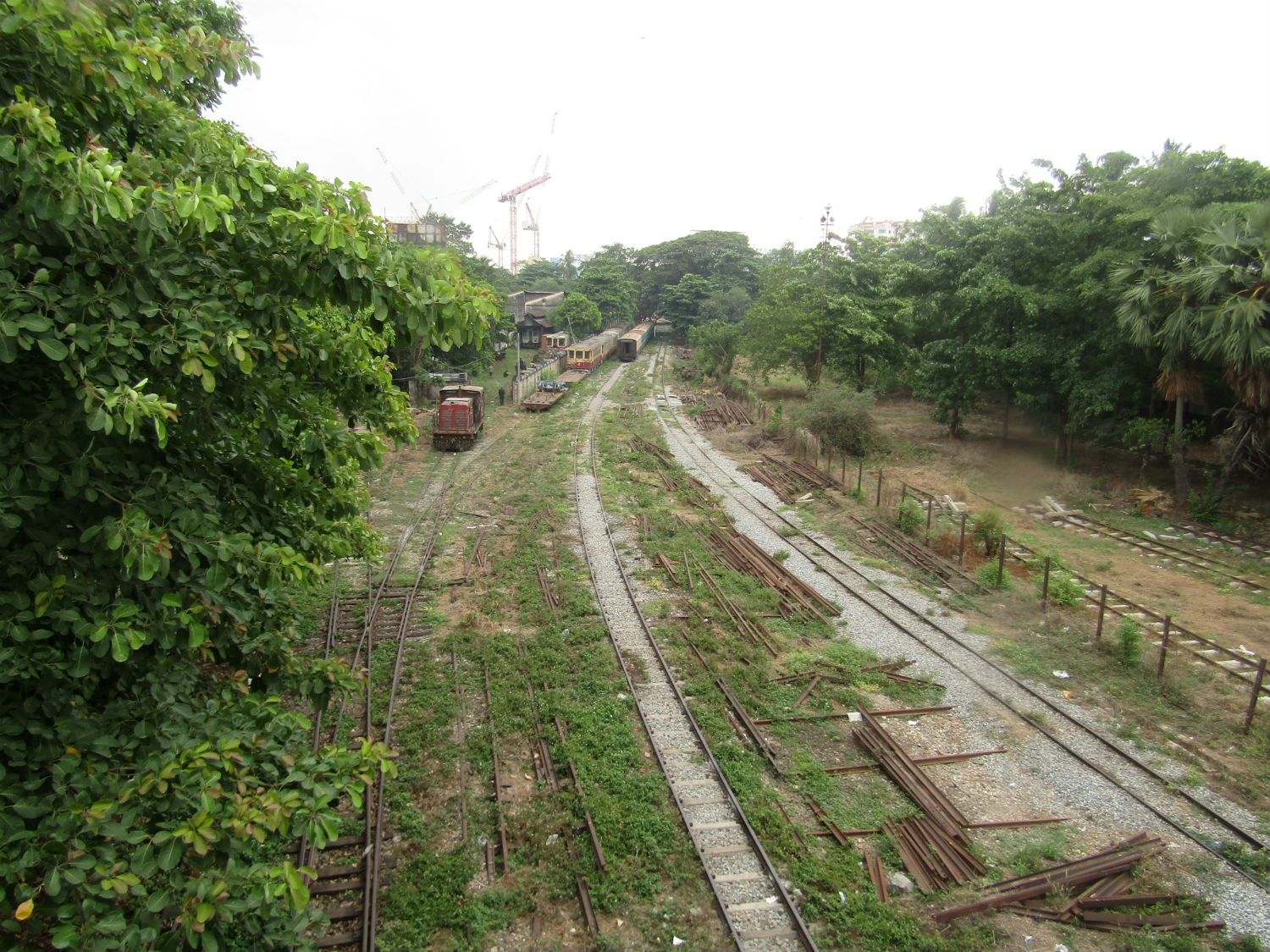
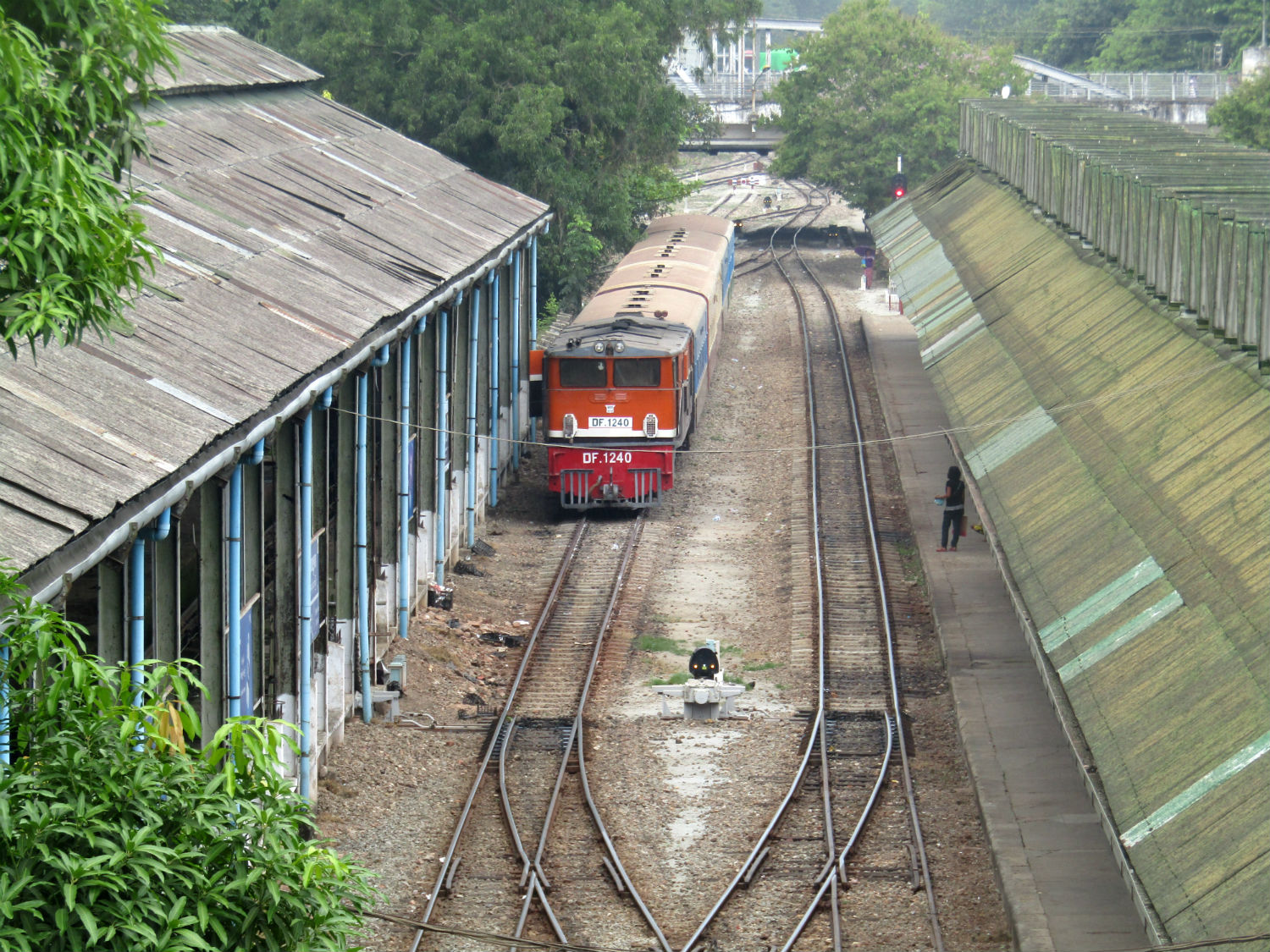
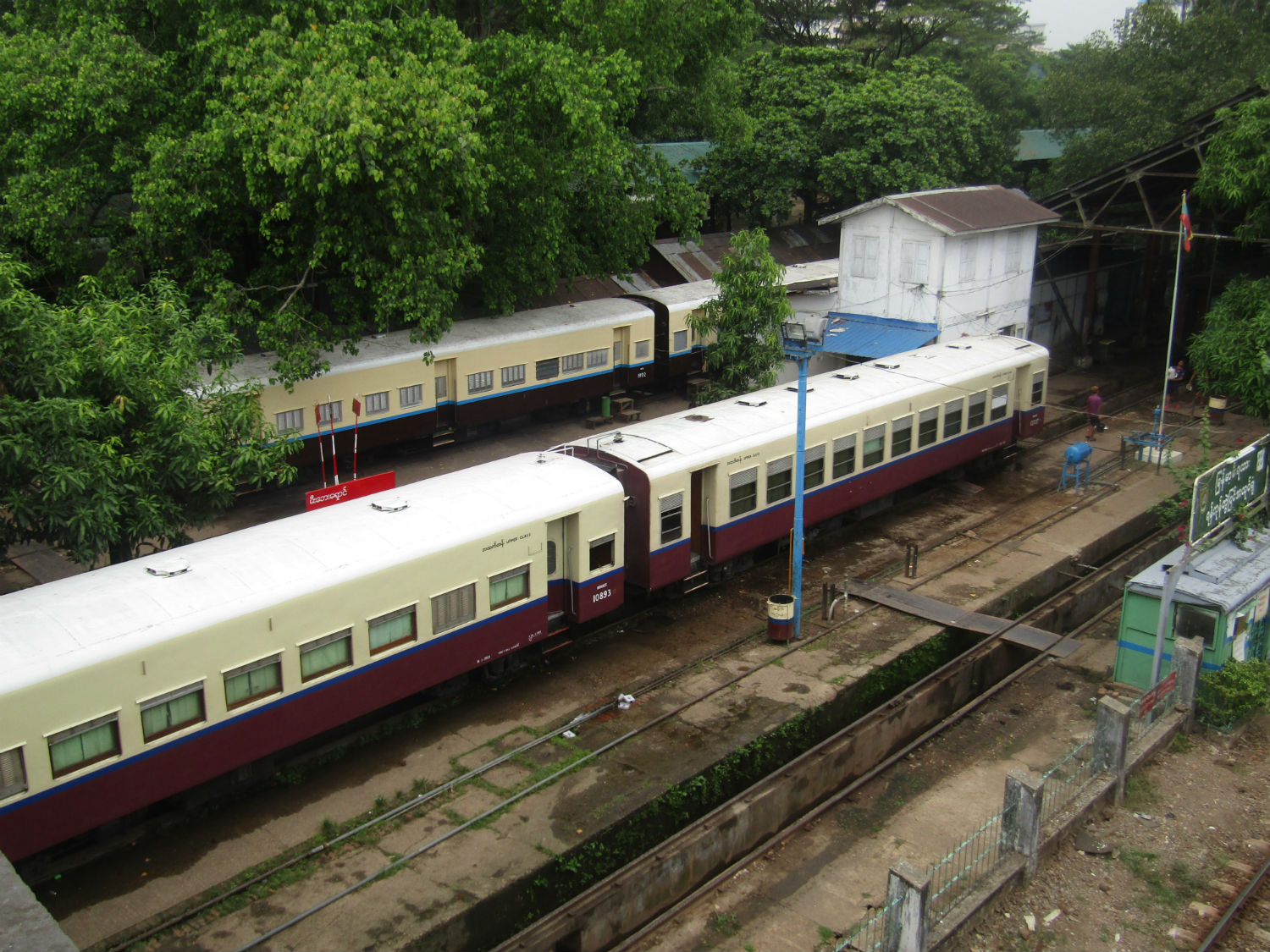
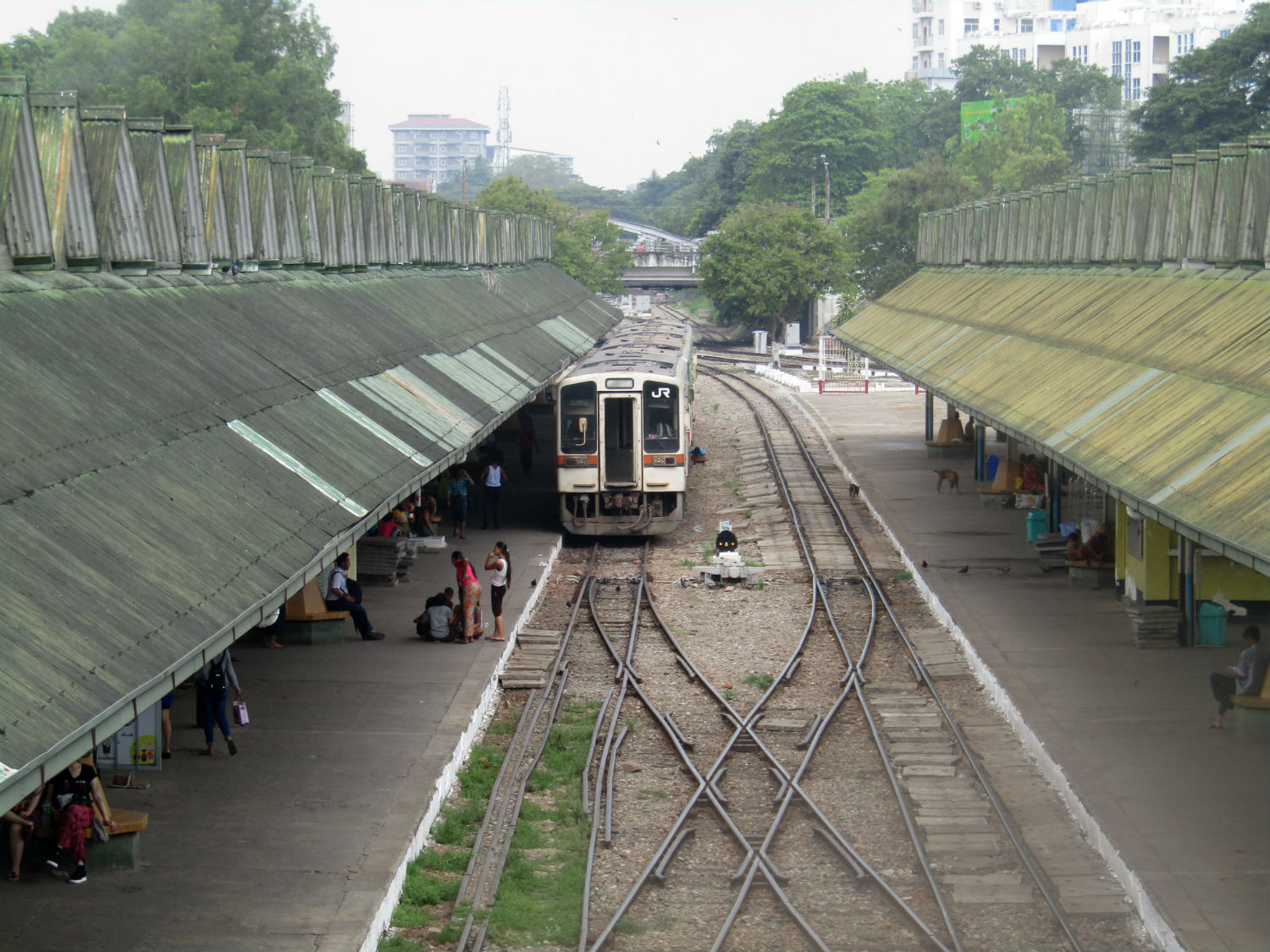
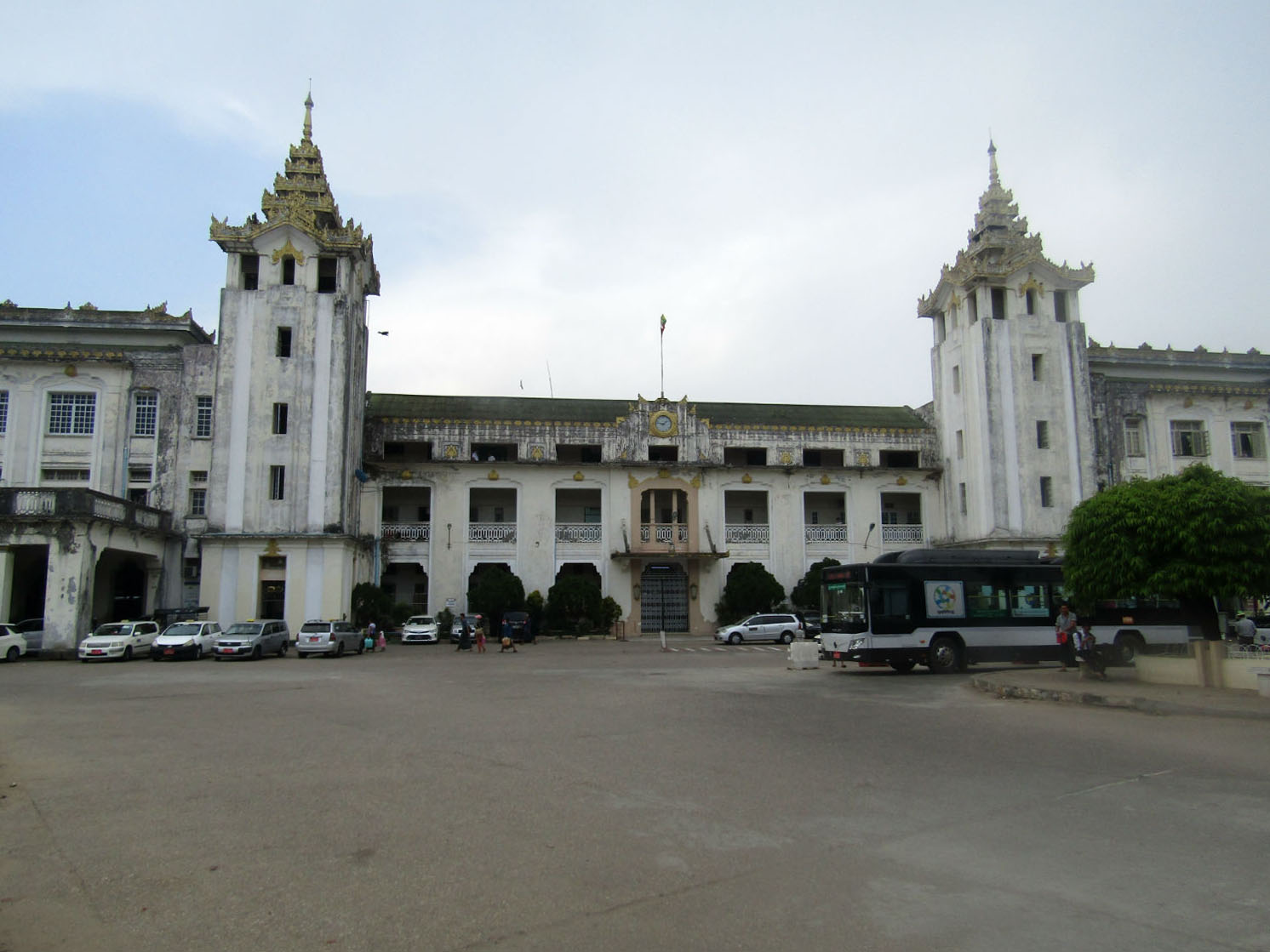
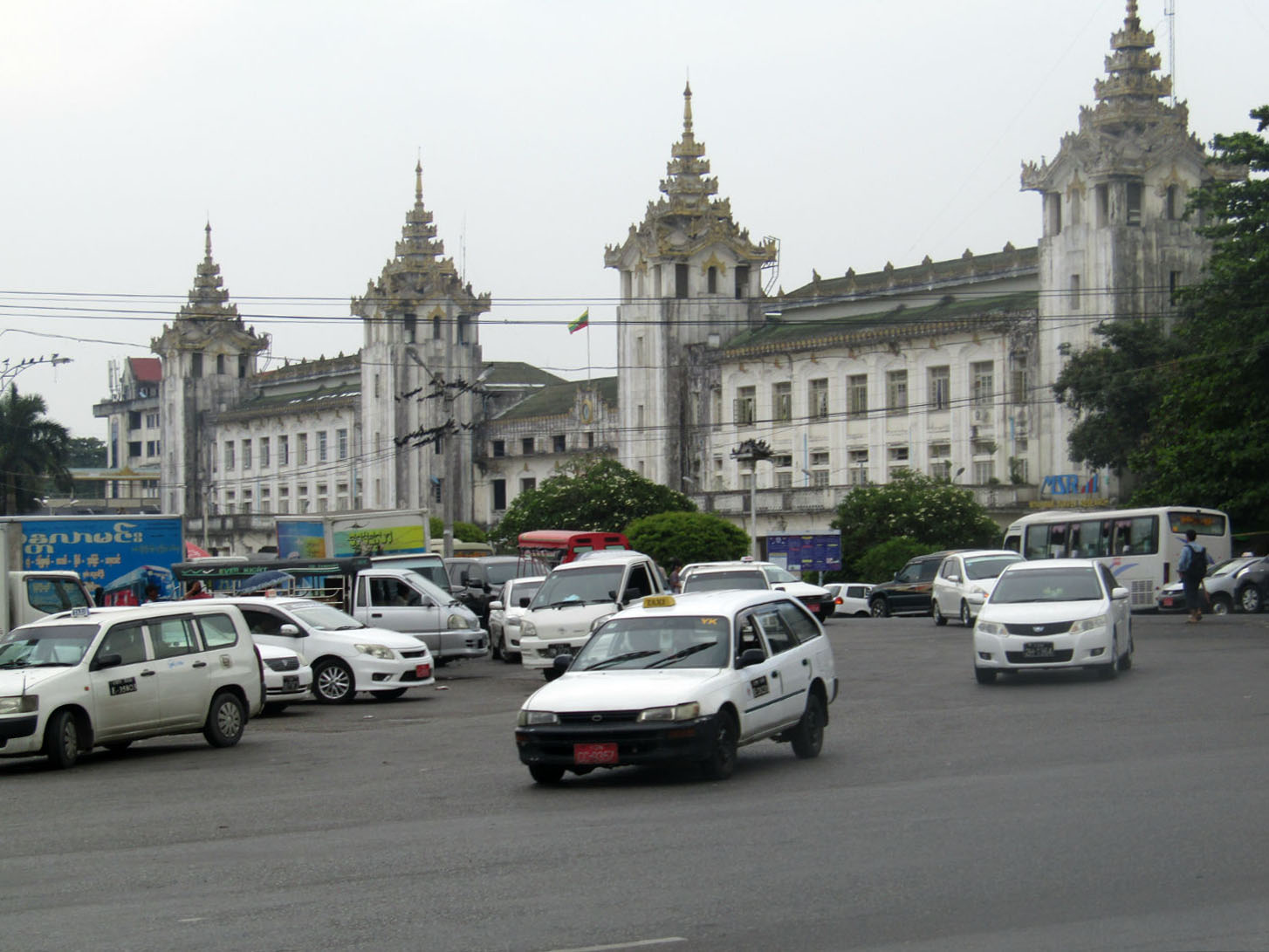 Yangon Railway Station, Yangon
Yangon Railway Station, Yangon
St Anthony’s Methodist Church……..
On checking my location. I realize we’ve wandered too far away from another site of interest, St Mary’s Catholic Church which lies to the east but I’m really in need of a break from walking and St Anthony’s Methodist Church, an attractive piece of architecture in its own rite, provides a pew, a respite from the heat and a chance to take the weight off my feet enough for a prayer. As I look around this church it is totally devoid of anything obviously religious except for the altar, the pulpit and the pews. I would almost say it’s been stripped of its valuables but there is no indication of vandalism: It’s actually quite clean and tidy suggesting it still functions.
Whatever its function or otherwise, I’m reminded of Martin Luther, the father of the Protestant movement who challenged the Catholic Church in Rome over what he perceived as abuse of power; that ordinary people could still be close to God provided they read their scriptures and obeyed God’s commandments. It was the role of the clergy to be God’s representatives and teachers with no power of their own.
When I see here no images of Christ, no representation of Saints, no embellishments, no solicitation to pay tribute, not even a collection box, I really stand to question all I’ve become accustomed to here and in Thailand. I ask Katoon to stop and look around her but I just know she doesn’t understand that you can be close to your maker without all those ‘graven images’, as one commandment puts it. With Catholicism and to a much greater extent, Buddhism the symbolism of images means power over the mind on an industrial scale leading to the building of ever more spectacular temples with golden pagodas and beautiful halls. The value of these is incalculable at a time when churches at home cannot afford to repair their rooves. But then Buddhism has been this way for 2,500 years, the Catholic Church, 2,000 years and Protestantism a mere 500. I’ve spend more time that I intended here but it’s against the backdrop of this fascinating clash of ideas that the the British marched in nearly 200 years ago and set up their HQ’s in religious compounds, muddy boots and all!
Whatever its function or otherwise, I’m reminded of Martin Luther, the father of the Protestant movement who challenged the Catholic Church in Rome over what he perceived as abuse of power; that ordinary people could still be close to God provided they read their scriptures and obeyed God’s commandments. It was the role of the clergy to be God’s representatives and teachers with no power of their own.
When I see here no images of Christ, no representation of Saints, no embellishments, no solicitation to pay tribute, not even a collection box, I really stand to question all I’ve become accustomed to here and in Thailand. I ask Katoon to stop and look around her but I just know she doesn’t understand that you can be close to your maker without all those ‘graven images’, as one commandment puts it. With Catholicism and to a much greater extent, Buddhism the symbolism of images means power over the mind on an industrial scale leading to the building of ever more spectacular temples with golden pagodas and beautiful halls. The value of these is incalculable at a time when churches at home cannot afford to repair their rooves. But then Buddhism has been this way for 2,500 years, the Catholic Church, 2,000 years and Protestantism a mere 500. I’ve spend more time that I intended here but it’s against the backdrop of this fascinating clash of ideas that the the British marched in nearly 200 years ago and set up their HQ’s in religious compounds, muddy boots and all!
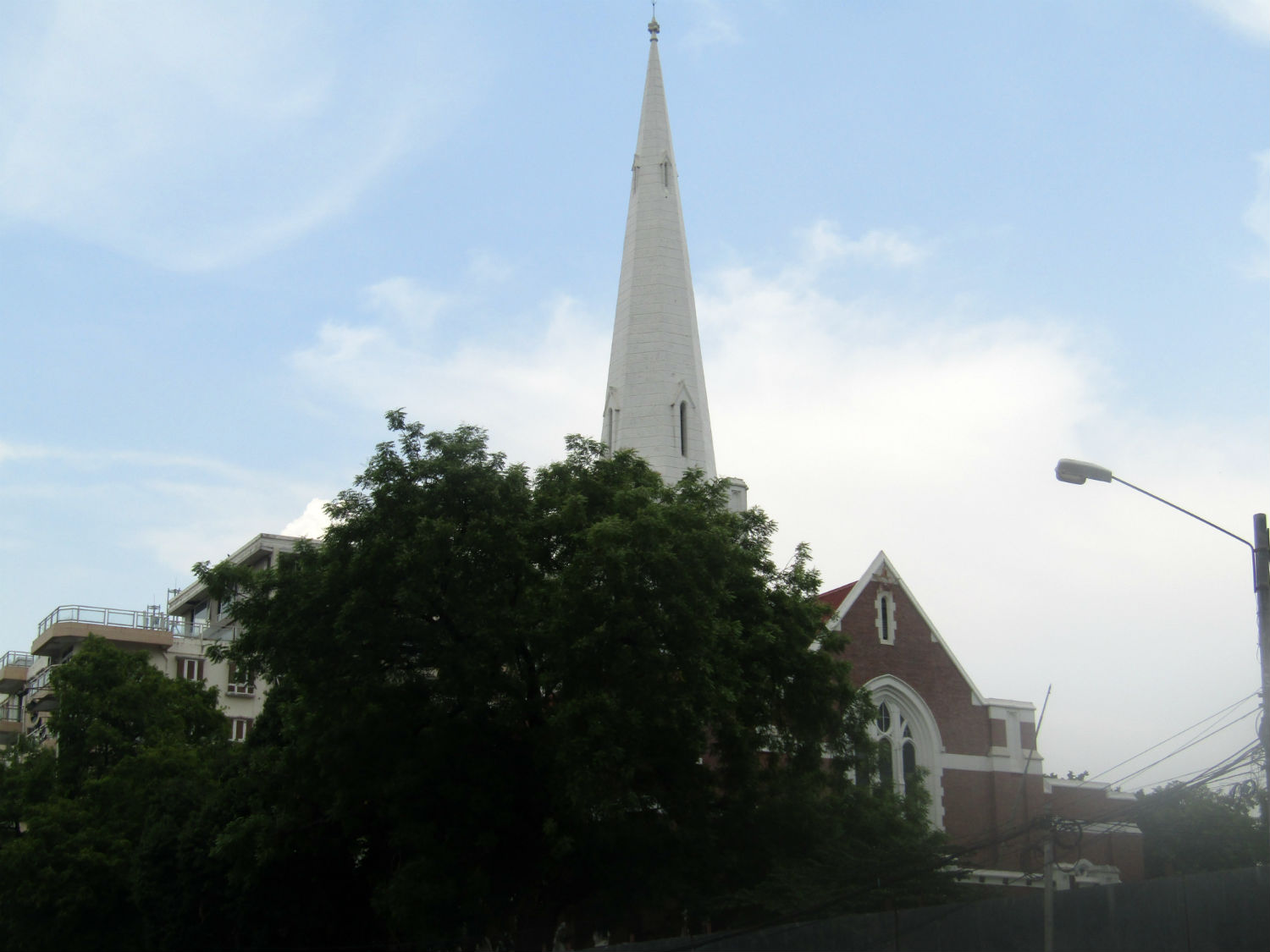
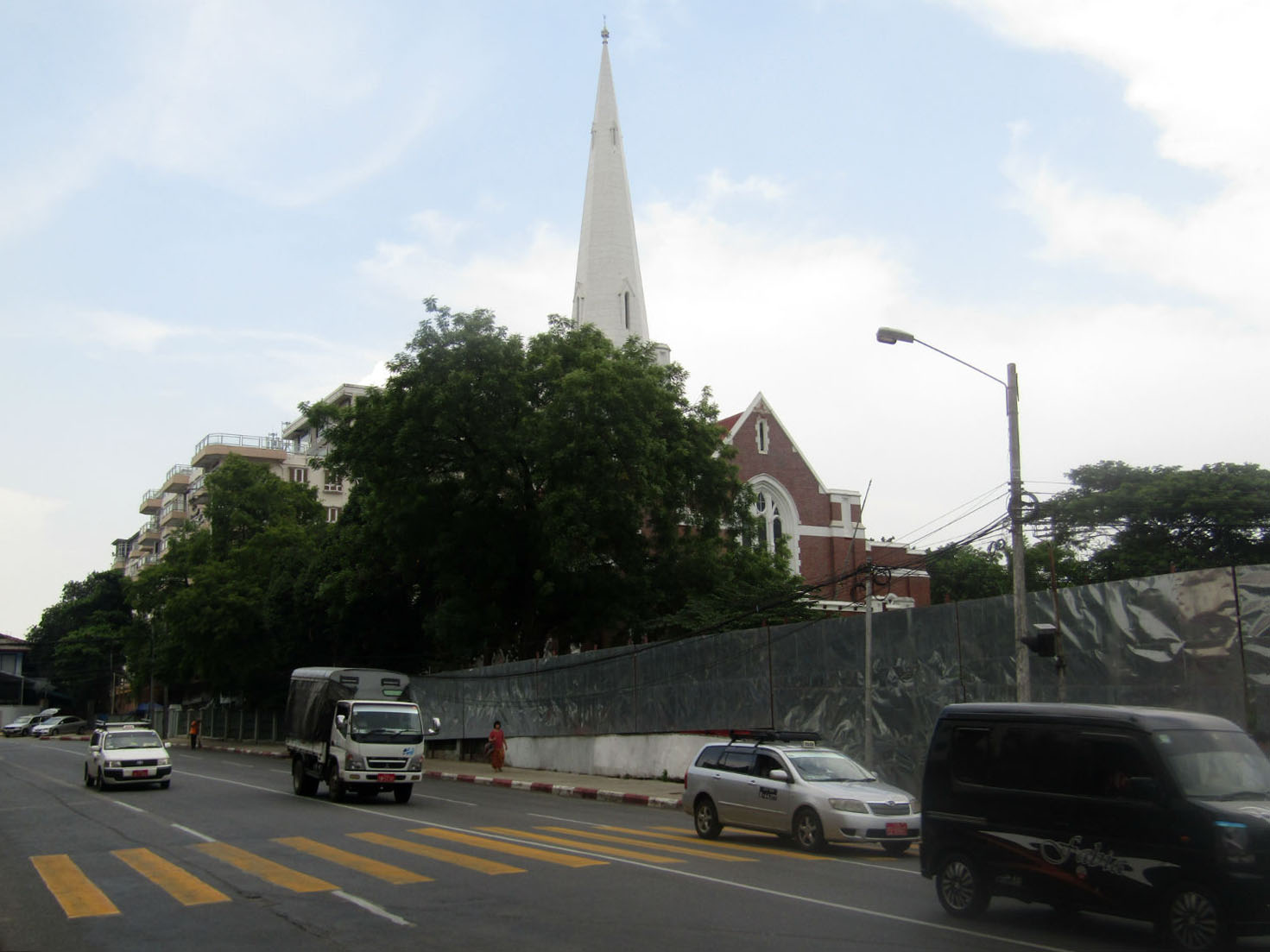
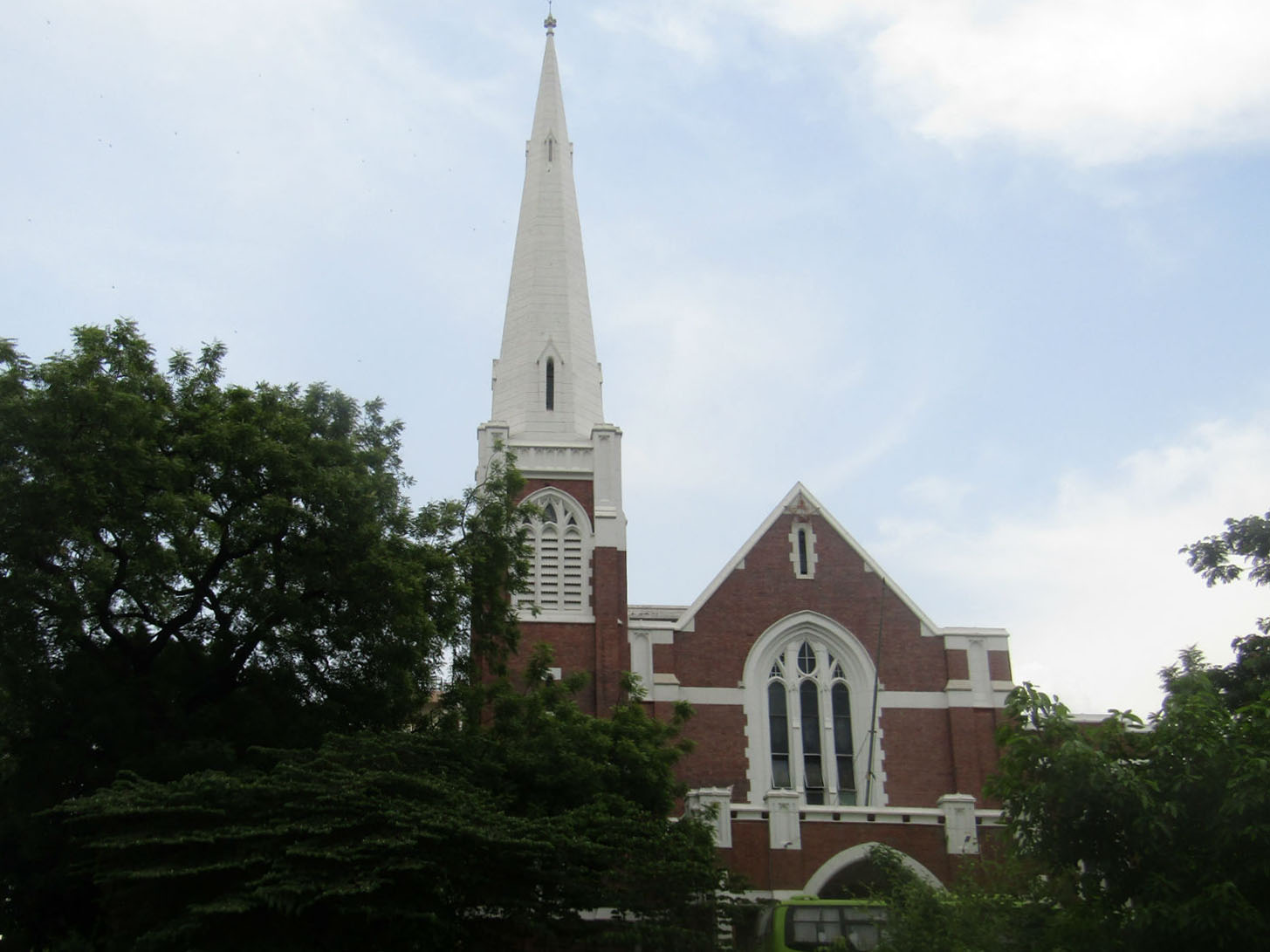 St Anthony’s Methodist Church, Yangon
St Anthony’s Methodist Church, Yangon
Food for thought……..
It’s time to head back but I know there’s another issue about to rear its head. Yangon and Myanmar in general has until recently been reluctant to accept international food chains such as McDonalds, KFC, Burger King etc. Even the trusted 7-eleven convenience stores are missing where you can get a warmed up meal. There are Burmese food halls which extend their range to include Chinese and a few other regional foods but Katoon is not happy, using every excuse in the book to avoid them. So what will she do? I’m not prepared to spend hours wandering around busy street and hedge my bets buying some snacks and some beer of course to take back to the room. Back at Crystal Palace that works so well I’m soon fast asleep. However by early evening Katoon wakes me up asking what I plan to do for dinner but more relevant is what she wants to do! Handing her my wallet, I suggest she goes downstairs and order a meal from the restaurant for which you will pay much more than at local restaurants for the same thing. Because I won’t lead her by the hand she starts to open another pack of pot noodles but I know it can’t go on like this; it’s only the second night. It’s obvious to me though that she just cannot stomach the conditions in which the food is cooked and served at local food halls. There was the same problem in Laos, Cambodia and Vietnam yet she’s happy to sit out on a dusty pavement in Thailand for a meal. On this occasion she has at least something to eat and that amazing breakfast will be something to look forward to tomorrow. Next Page.